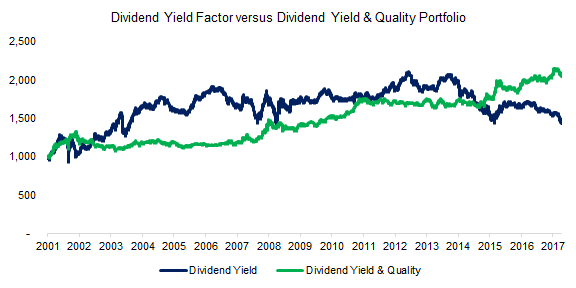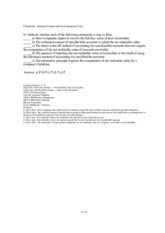In the accounting equation, assets are equal to liabilities plus equity. The reason why the accounting equation is so important is that it is always true – and it forms the basis for all accounting transactions in a double entry system. At a general level, this means that whenever there is a recordable transaction, the choices for recording it all involve keeping the accounting equation in balance. The accounting equation concept is built into all accounting software packages, so that all transactions that do not meet the requirements of the equation are automatically rejected. The accounting equation helps to assess whether the business transactions carried out by the company are being accurately reflected in its books and accounts. The accounting equation is also known as the balance sheet equation or the basic accounting equation.

It is enough tool to balance everyday business exchanges. For a more detailed analysis of the shareholder’s equity, an expanded accounting formula may also be used. In a corporation, capital represents the stockholders’ equity. Thus, the accounting formula essentially shows that what the firm owns (its assets) has been purchased with equity and/or liabilities. Accounting equation describes that the total value of assets of a business entity is always equal to its liabilities plus owner’s equity. This equation is the foundation of modern double entry system of accounting being used by small proprietors to large multinational corporations.
Limits of the Accounting Equation
The asset, liability, and shareholders’ equity portions of the accounting equation are explained further below, noting the different accounts that may be included in each one. All assets owned by a business are acquired with the funds supplied either by creditors or by owner(s). In other words, we can say that the value of assets in a business is always equal to the sum of the value of liabilities and owner’s equity. The total dollar amounts of two sides of accounting equation are always equal because they represent two different views of the same thing. In order to see if the accounts balance, we have to use the accounting equation. The accounting equation states that assets are equal to the sum of the total liabilities and owner’s equity.
- What also amazes me is that the thing they use to keep their balance is just a long pole.
- It’s hard to believe, but did you know that an accountant and a tightrope walker have the same goal?
- Since the balance sheet is founded on the principles of the accounting equation, this equation can also be said to be responsible for estimating the net worth of an entire company.
- It thus helps shareholders determine the company’s worth and establish the relationship between them.
- The accounting equation is essential since it enables an assessment of the accuracy of recording business transactions carried on by the individual or the company in all relevant books and accounts.
In this new equation, the owner’s equity is broken down further into more detailed components. The objective of doing this is for the financial analysts to have more insights into how the company’s profits are being used. They check if profits are being used as dividends, company improvements, or retained as cash. The expanded accounting equation shows the relationship between your balance sheet and income statement.
Basic Accounting Equation: Formula, Calculation and Examples
Expenditure that occurred in acquiring these valuable articles is also considered as asset. Assets are purchased to increase the earning capacity of the business. The value of these assets keeps on changing from time to time. Johnson INC. purchased a machine for $ and paid $ in cash; Accounting Equation: Definition and Example the rest was allowed to be paid later. The transaction results in an inflow of machines, an outflow of cash, and the creation of liability for the balance amount to be paid. These are some simple examples, but even the most complicated transactions can be recorded in a similar way.
- Initial start-up cost of a company that comes from the owner’s own pocket – that’s a good example of owner’s equity.
- Johnson INC. purchased a machine for $ and paid $ in cash; the rest was allowed to be paid later.
- This straightforward relationship between assets, liabilities, and equity is considered to be the foundation of the double-entry accounting system.
- The net assets part of this equation is comprised of unrestricted and restricted net assets.
- In other words, it’s the amount of money owed to other people.
- The accounting equation is also called the balance sheet equation.
Additionally, you can use your cover letter to detail other experiences you have using the equation. For example, you can talk about how you checked that the books were balanced for a friend or family member’s small business. And we find that the numbers do balance, meaning Apple has been reporting transactions accurately, and its double-entry system is working. Think of retained earnings as savings, since it represents the total profits that have been saved and put aside (or “retained”) for future use.
Terms Similar to Accounting Equation
Every transaction demonstrates the relationship of the elements and shows how balance is maintained. Equity on the other hand is the shareholders’ https://accounting-services.net/how-to-calculate-fixed-manufacturing-overhead/ claims on the company assets. This is the amount of money shareholders have contributed to the company for an ownership stake.

Since the balance sheet is founded on the principles of the accounting equation, this equation can also be said to be responsible for estimating the net worth of an entire company. The fundamental components of the accounting equation include the calculation of both company holdings and company debts; thus, it allows owners to gauge the total value of a firm’s assets. The income and retained earnings of the accounting equation is also an essential component in computing, understanding, and analyzing a firm’s income statement. This statement reflects profits and losses that are themselves determined by the calculations that make up the basic accounting equation. In other words, this equation allows businesses to determine revenue as well as prepare a statement of retained earnings.
What Is Shareholders’ Equity in the Accounting Equation?
Different transactions impact owner’s equity in the expanded accounting equation. Revenue increases owner’s equity, while owner’s draws and expenses (e.g., rent payments) decrease owner’s equity. Double-entry accounting uses the accounting equation to show the relationship between assets, liabilities, and equity. When you use the accounting equation, you can see if you use business funds for your assets or finance them through debt. The accounting equation is also called the balance sheet equation.